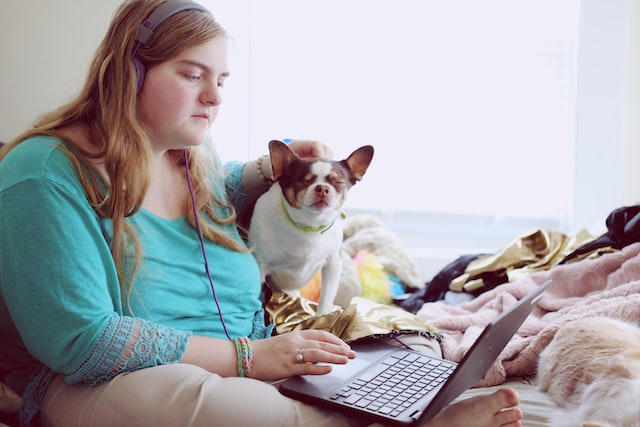During the COVID-19 pandemic, school lockdowns and the shift to learning in a remote virtual format led to increased uncertainty, burnout amongst teachers and setbacks for many, as education was seemingly put to a halt. Students with neurological learning challenges (otherwise known as neurodivergent) are especially sensitive to unpredictable changes in their environment. Having routine, consistency, and stability in a learning environment is especially important for those with cognitive challenges, to give them an increased sense of control and thereby free up cognitive reserve to focus on learning.

Despite the contention and troubleshooting that came along with the shift to virtual remote learning, it seems that the pros outweigh the cons for children who fall along the neurodiversity spectrum. In an EdSurge article, voices of those with such lived experiences are brought into the spotlight to share their opinions. Many parents of children who are neurodiverse, along with other family members, agree and advocate for their kids to stay online for their schooling. Some families have even gone as far as to send their children to a new school to ensure their education continues in a distance-learning format.
Jan Blacher, an education professor at the University of California Riverside, has highlighted that for neurodivergent learners, a positive and strong student-teacher relationship is a critical predictive factor for increased academic success, decreased risk of dropping out, and increased friendship quality. Those with autism may have difficulty in cultivating such a relationship with their teacher due to challenges in emotional expression and perception related to their sociobehavioral disorder, so teachers are recommended to put in more effort for students with such challenges.
Preliminary evidence indicates that neurodivergent students’ performance is superior in remote-learning environments compared to in-person. This may be related to being in a more consistent and predictable setting. For instance, Sean Arnold, a special education teacher in New York City, noticed that one of his neurodiverse students, who is selectively mute, spoke for the very first time to their classmates through videoconference, having never done so during in-person schooling.
Remote learning is not without its challenges, however, and it’s important for educators to be cognizant of how to mitigate the disadvantages. With the increase in flexibility that comes with online learning, students may start to feel a lack of structure, which can be remedied by having the student’s family more involved in supporting their educational pursuits, and keeping them accountable.
Another concern is the lack of opportunities for practicing social communication skills. While this can be partially resolved through greater use of videoconference to interact with fellow classmates and teachers, it likely isn’t sufficient for emotional attunement, and/or meeting other goals in the student’s individualized education plan (IEP). Educators, students and their families can also consider hybrid models that blend both in-person and online learning.
Of all the lessons learned from the pandemic, the takeaway from this article is to continue to push for educational institutions to invest in services that accommodate neurodiversity and disability such as by having teachers participate in professional development opportunities to make learning more inclusive for neurodiverse learners, or by advocating for policy changes.
Tags: covid-19, distance learning, learning, learning disabilities, neurodivergence, neurological disorders, online learning, pandemic, post-secondary, primary school, school, universityCategorised in: Uncategorized
This post was written by Linda H
